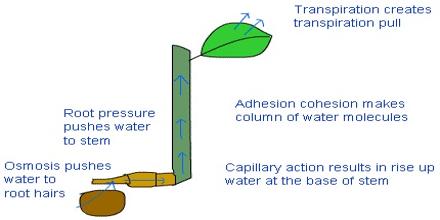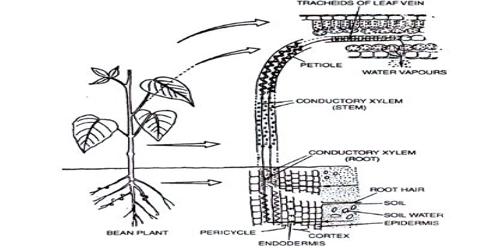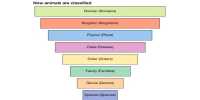The ascent of Sap from Root to Leaf
Ascent of sap: Water together with dissolved mineral salts is called cell sap or sap. This solvent absorbed by root hairs enters the xylem vessel and eventually, this solvent is conducted to the leaves. The process by which the cell sap is conducted from the root to the upper parts of leaves through xylem vessels is known as the ascent of sap.
It is known from the experiment that the sap from the root raises upward up to the leaves through vessels and tracheid of the xylem tissue.
There are many theories about the ascent of sap which arc discussed below under two headings:
- Bio-Chemical Theories
- Physical Theories

Bio-Chemical Theories
Pulsation Theory: Sir Jagadish Chandra Bosu (1923) proposed this theory. According to this theory, by the active pulsation; alternate expansion and contraction of the living cells of the cortex, the cell sap enters the xylem tissue ultimately rises upward up to leaves. Since this theory was not explained in the laboratory; it is not acceptable.
Vital force: Godlewski (1884) proposed this hypothesis. According to him, the living parenchyma cells around the xylem tissue act as a series of relay pumps which rise the sap upward. This hypothesis is not acceptable.
Physical theories:
- Force of capillarity: According to this theory, the vessels and tracheids are similar to some narrow tubes. It is experimentally proved that the narrower the bore of xylem tube the greater is the rise of water. But a lot of objections have been raised against this hypothesis.
- Imbibitional force: According to this hypothesis, as the vessels and tracheid walls are colloidal in nature water rises up through their walk by imbibition and not through their cavities. Now a day, this hypothesis is not acceptable.
iii. Root pressure: This pressure is created when water iv forced through the passage cells of the endodermis in to the xylem vessels from the turgid cortex cells. From the xylem vessels of the root, water moves into upward direction this hypothesis is not universally accepted.
- Cohesion theory: Two Irish plant physiologists, Dixon and Joly in 1894 proposed this theory. This theory is now universal accepted as an explanation for the ascent of sap in plants.
- According to this theory, the water molecules cohere together and form a long continuous column attending from the root to the leaf through the xylem vessels
- The water molecules cohere so strongly to one another that the column does not break anywhere in its entire length.
- During transpiration mesophyll, cells lose water which creates diffusion pressure deficit in the cell sap. Due to the diffusion pressure deficit of the cell sap, a strong suction force is generating.














